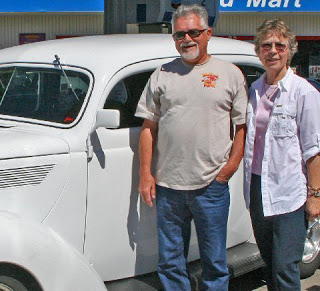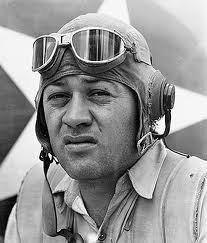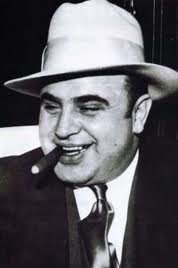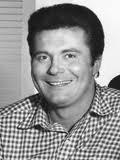Below is a list of U.S. state birds as designated by each state's, district's or territory's government.
The selection of state birds began with Kentucky adopting the northern cardinal in 1926. It continued when the legislatures for Alabama, Florida, Maine, Missouri, Oregon, Texas and Wyoming selected their state birds after a campaign was started by the General Federation of Women's Clubs to name official state birds in the 1920s. The last state to choose its bird was Arizona in 1973.
Pennsylvania never chose an official state bird, but did choose the ruffed grouse as the state game bird. Alaska, California, and South Dakota permit hunting of their state birds. Alabama, Georgia, Massachusetts, Missouri, Oklahoma, South Carolina, and Tennessee have designated an additional "state game bird" for the purpose of hunting. The northern cardinal is the state bird of seven states, followed by the western meadowlark as the state bird of six states.
The District of Columbia designated a district bird in 1938. Of the five inhabited territories of the United States, American Samoa and Puerto Rico are the only ones without territorial birds.
State birds
| State, district, or territory |
Bird | Scientific name | Picture | Year |
|---|---|---|---|---|
| Alabama | Yellowhammer (northern flicker) | Colaptes auratus | 1927 | |
| Alaska | Willow ptarmigan | Lagopus lagopus | 1955 | |
| American Samoa | None (See List of birds of American Samoa) |
— | — | — |
| Arizona | Cactus wren | Campylorhynchus brunneicapillus |
1973 | |
| Arkansas | Northern mockingbird | Mimus polyglottos | 1929 | |
| California | California quail | Callipepla californica | 1931 | |
| Colorado | Lark bunting | Calamospiza melanocorys | 1931 | |
| Connecticut | American robin | Turdus migratorius | 1943 | |
| Delaware | Delaware Blue Hen | Gallus gallus | 1939 | |
| District of Columbia | Wood thrush | Hylocichla mustelina | 1938 | |
| Florida | Northern mockingbird | Mimus polyglottos | 1927 | |
| Georgia | Brown thrasher | Toxostoma rufum | 1928 | |
| Guam | Guam rail (ko'ko') | Gallirallus owstoni | 2000 | |
| Hawaii | Hawaiian goose (nēnē) | Branta sandvicensis | 1957 | |
| Idaho | Mountain bluebird | Sialia currucoides | 1931 | |
| Illinois | Northern cardinal | Cardinalis cardinalis | 1929 | |
| Indiana | Northern cardinal | Cardinalis cardinalis | 1933 | |
| Iowa | Eastern goldfinch (American goldfinch) | Spinus tristis | 1933 | |
| Kansas | Western meadowlark | Sturnella neglecta | 1933 | |
| Kentucky | Northern cardinal | Cardinalis cardinalis | 1926 | |
| Louisiana | Brown pelican | Pelecanus occidentalis | 1966 | |
| Maine | Chickadee | Not specified in state law | 1927 | |
| Maryland | Baltimore oriole | Icterus galbula | 1947 | |
| Massachusetts | Black-capped chickadee | Poecile atricapilla | 1941 | |
| Michigan | American robin | Turdus migratorius | 1931 | |
| Minnesota | Common loon | Gavia immer | 1961 | |
| Mississippi | Northern mockingbird | Mimus polyglottos | 1944 | |
| Missouri | Eastern bluebird | Sialia sialis | 1927 | |
| Montana | Western meadowlark | Sturnella neglecta | 1941 | |
| Nebraska | Western meadowlark | Sturnella neglecta | 1929 | |
| Nevada | Mountain bluebird | Sialia currucoides | 1967 | |
| New Hampshire | Purple finch | Carpodacus purpureus | 1957 | |
| New Jersey | Eastern goldfinch (American goldfinch) | Spinus tristis | 1935 | |
| New Mexico | Greater roadrunner | Geococcyx californianus | 1949 | |
| New York | Eastern bluebird | Sialia sialis | 1970 | |
| North Carolina | Northern cardinal | Cardinalis cardinalis | 1943 | |
| North Dakota | Western meadowlark | Sturnella neglecta | 1970 | |
| Northern Mariana Islands | Mariana fruit-dove | Ptilinopus roseicapilla | ? | |
| Ohio | Northern cardinal | Cardinalis cardinalis | 1933 | |
| Oklahoma | Scissor-tailed flycatcher | Tyrannus forficatus | 1951 | |
| Oregon | Western meadowlark (state songbird) |
Sturnella neglecta | 1927 2017 |
|
| Pennsylvania | Ruffed grouse | — | — | — |
| Puerto Rico | None | — | — | — |
| Rhode Island | Rhode Island Red | Gallus gallus | 1954 | |
| South Carolina | Carolina wren | Thryothorus ludovicianus | 1948 | |
| South Dakota | Ring-necked pheasant | Phasianus colchicus | 1943 | |
| Tennessee | Northern mockingbird | Mimus polyglottos | 1933 | |
| Texas | Northern mockingbird | Mimus polyglottos | 1927 | |
| Utah | California gull | Larus californicus | 1955 | |
| Vermont | Hermit thrush | Catharus guttatus | 1941 | |
| Virgin Islands | Bananaquit | Coereba flaveola | 1970 | |
| Virginia | Northern cardinal | Cardinalis cardinalis | 1950 | |
| Washington | Willow goldfinch (American goldfinch) | Spinus tristis | 1951 | |
| West Virginia | Northern cardinal | Cardinalis cardinalis | 1949 | |
| Wisconsin | American robin | Turdus migratorius | 1949 | |
| Wyoming | Western meadowlark | Sturnella neglecta | 1927 |
- 1 cup grated Parmesan cheese
- 2 sprigs fresh thyme, stem removed
- 1 teaspoon garlic powder
- 1/2 teaspoon salt
- 1/2 teaspoon black pepper
- 2 pounds baking potatoes (about 4 large) peeled and thinly sliced (see Note)
- 1/2 stick butter, melted
- 1/2 cup chopped onion
- 1 cup heavy cream
- Preheat oven to 375º. Coat a 1-1/2 quart baking dish with cooking spray.
- In a small bowl, combine Parmesan cheese, thyme, garlic powder, salt and pepper, mix well; set aside.
- In a large bowl, combine potatoes and butter; toss until evenly coated. Arrange 1/4 of the potato slices in a single layer in baking dish. Sprinkle 2 tablespoons onion and 1/4 cup cheese mixture over potatoes. Arrange another single layer of potatoes followed by 2 tablespoons onion and 1/4 cup cheese mixture. Drizzle 1/2 of heavy cream over cheese mixture. Repeat layers 2 more times ending with heavy cream.
- Cover and bake 45 minutes. Uncover, and continue baking for 25 to 30 minutes more or until potatoes are tender and golden brown. Serve immediately.
1918 – Albert Francis Capone, American crime boss son (d. 1947)
1934 – Wink Martindale, American game show host
1937 – Max Baer, Jr., American actor
1944 – Dennis Wilson, American musician (d. 1983)
The origin of the cookie appears to begin in Persia in the 7th century, soon after the use of sugar became common in the region. They then spread to Europe through the Muslim conquest of Spain. Cookies were common at all levels of society throughout Europe by the 14th century, from the royal cuisine to the street vendors.
Cookies arrived in America in the 17th century. Macaroons and gingerbread cookies were among the popular early American cookies.
In most English-speaking countries outside of North America, the most common word for cookie is “biscuit.” In some regions, both terms, cookies, and biscuits are used.
Cookies are classified into different categories, with the most common ones being:
Bar cookies – Drop cookies – Filled cookies
Molded cookies – No bake cookies
Pressed cookies – Refrigerator cookies
Rolled cookies – Sandwich cookies
HOW TO OBSERVE
Pick up some cookies at your local bakery. Remember to share some of your cookies with your family and friends! A great way to get started is by making a list of your favorite cookies to bake and enjoy. Then organize your baking tools and start your assembly line.
First Place Coconut Macaroons
Gingerbread Cookies
NATIONAL COOKIE DAY HISTORY
In 1976, Sesame Street included National Cookie Day on its calendar for the first time on November 26th. The Cookie Monster also proclaimed his own National Cookie Day in the 1980 book The Sesame Street Dictionary.
Then in 1987, Matt Nader of the Blue Chip Cookie Company out of San Francisco created Cookie Day, celebrating it on December 4th.

























3 comments:
WOW! Sami looks Fabulous! How she has grown up!! Congratulations to her and to her Mom and Dad for their years of support. Does she have aspirations for the Olympics?
Do I see you in the audience wearing stars and stripes? I see the other grandma there.
Hugs, XOXO Trisha
Yes Trish, that is Grandma Jean and me. As for the Olympics, I don't know.
xo
Isn’t every day cookie day?🤣
Enjoyed the list of birds… the potato recipe… but best of all- seeing Sami’s strength, beauty and grace. It is pleasing she has persevered in this sport.
Post a Comment